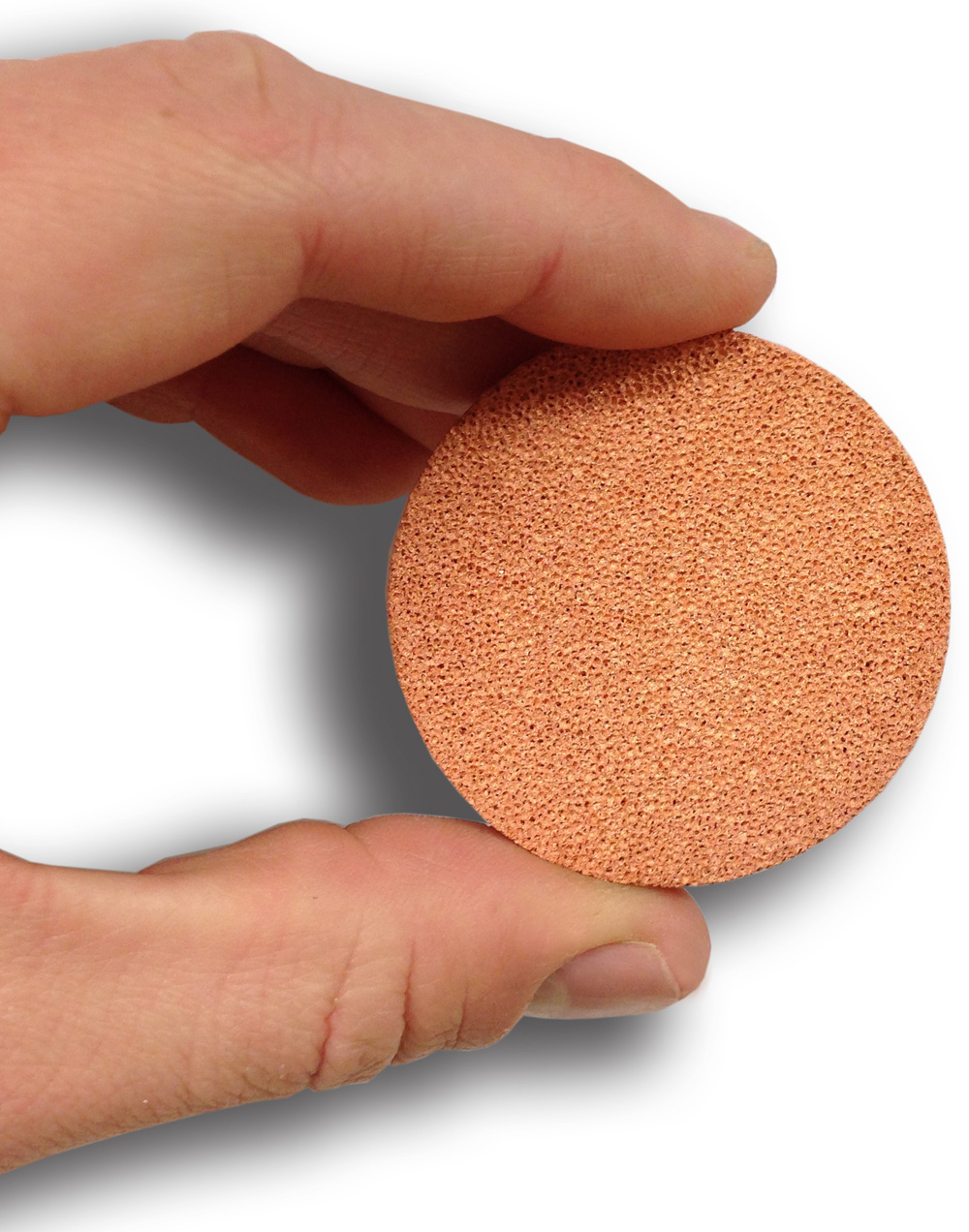Microporous Copper Foam As Powerful Heat Sink
Goodfellow offers a new copper foam with pore sizes between 300 and 600 µm and a relative density of around 37%, providing a much higher surface area than traditional copper foams

This microporous material is expected to be of particular interest to design engineers working in fields requiring heat exchange.
Microporous copper foam is unique in that it is produced by means of a lost carbonate sintering process. Pure copper powder is mixed with a carbonate powder, compacted and sintered. This forms a matrix of copper ligaments, in between which is the carbonate powder. After cooling, the carbonate is dissolved away in water and recycled or decomposed using heat. The resulting structure is regular and uniform throughout, giving a rigid, highly porous and permeable structure with a controlled density of metal per unit volume.
Applications of microporous copper foam include but are not limited to:
Liquid cooling
Air cooling
Heat exchangers
Board-level electronics cooling
Power electronics
EMI shielding
Goodfellow supplies microporous copper foam as disks and sheets ranging in thickness from 4 to 10 mm. Other thicknesses may be available upon request.
CONTACT
Martyn Lewis
Goodfellow Cambridge Ltd
info@goodfellow.com
www.goodfellow.com
+44 (0) 1480 424800
Wednesday 22 April 2015 / file under Engineering | Electronics


